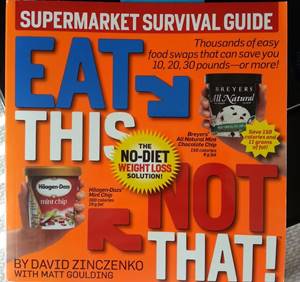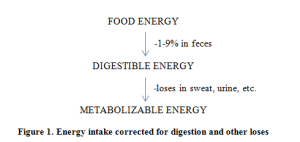Train Loco Readers…How Are We Doing This Month!? Today we have a great and informative guest article by our friend and colleague, Dylan Klein. Dylan is currently pursuing his Doctorate degree in nutritional biochemistry and physiology at the University of Rutgers. We asked Dylan to write a guest post for our site because we know Dylan is A) He’s a great writer B) Knows the scientific literature very well C) He will not sugar coat or tell you what you want to hear. If you are frustrated and tired of trying the new fad diet by Dr. Oz or the magical “lose 20 lbs of fat in 10 days” diet by a celebrity, then you will be in for a treat with this article today. Without further ado, please give your undivided attention to Dylan Klein. Enjoy!
-Eric and Chris
Today I want to talk about weight loss: more specifically, how someone loses weight. Given the recent congressional hearings regarding Dr. Oz and his outrageous weight loss claims – not to mention the myriad other diets and diet books out there claiming miracle-like results – I find that a lesson in the basics of weight loss is in order. And while I hate to be the bearer of bad news, it’s not the carbohydrates, or the high-fructose corn syrup, or animal products, or post-agricultural foods that are making you or anyone else overweight and/or obese. It’s simply too many calories. Similarly, it’s not the elimination of these foods, per se, that promotes weight loss. Rather, it’s a reduction in calories overall (be it through arbitrary dietary avoidances or what have you) that is the final arbiter of how many pounds you lose. End of story.
The premise for this, dare I say it, controversial claim stems from a firm understanding of the energy balance equation and how it operates. Unfortunately, numerous diet gurus have tried to persuade the public (for obvious financial reasons) that calories don’t matter and that the energy balance equation is a farce. Well, I am here to tell you that calories absolutely do matter and that any effective weight loss diet must obey the energy balance equation. Any efforts to circumvent or disregard the energy balance equation will wind up being useless and any hopes at losing those excess pounds will be lost. However, the energy balance equation, otherwise known as ‘calories in and calories out’ is a little more complex than what most believe. Leaving the psychological aspects for another day, today we will take a look at the energy balance equation to see how it operates and where most misunderstandings arise. Moreover, we will apply this knowledge towards seeing why most diets (take your pick), do in fact work (to some limited degree) yet tend to fail over the long-term.
By the end, I hope it becomes clear that whatever weight loss diet you choose to undertake (given that it suits your goals, needs and preferences), the reason that it works is not because of some arbitrary dietary avoidance(s) (or inclusions) but rather through good old caloric restriction.
So without further ado, let’s begin!
But first, the difference between weight loss and fat loss
While many diet books, commercials, and television ads like to talk about weight loss, most people (whether they know it or not) are actually concerned about losing body fat (i.e. fat loss). Indeed, weight loss and fat loss are not synonymous, despite the fact that many people (myself included from time to time) tend to use them interchangeably. Thus, a distinction should be made at the outset before we go any farther.
What’s the difference, you ask? The difference lies in outlining the body’s composition, or in other words, what factors make up the body’s total weight? In its simplest form, total body weight (TBW) can be described as follows (FM = fat mass; FFM = fat free mass):
TBW = FM + FFM
As you can see, your body is comprised partly of body fat (fat mass) and then everything that isn’t (i.e. fat free mass). This, however, is a little too simplistic, so let’s take this equation one step farther.
In doing so, take someone who weighs 75kg (~165lbs). Of that 75kg, a portion of that weight comes from protein (e.g. skeletal muscle and organs), a portion from body fat (e.g. adipose tissue), some from bone minerals (e.g. calcium, magnesium and phosphorus), and the remaining from water. I should note that glycogen (a storage form of carbohydrate in the body) also makes a contribution to total body weight (TBW), despite the fact that it doesn’t get much attention by most. Thus, TBW can now be summarized as:
TBW = protein + fat + bone minerals + water + glycogen
Coming back to our initial distinction between weight loss and fat loss, one can easily see the problem in using weight loss when they really mean to describe fat loss. This is because weight loss can really mean the reduction in any one of the body’s stores, such as bone, protein or water (i.e. anything with a defined weight). Therefore, it is technically incorrect to assume that weight loss automatically means fat loss, even though most people use the terms synonymously.
To further illustrate, a common side-effect (if you will) of starting a low-carbohydrate diet is the rapid loss of water weight that accompanies the depletion of muscle glycogen stores. Indeed, for every gram of glycogen you store in your muscles and liver, you store ~3-4 grams of water along with it. Thus, a good portion of the weight you lose at the start of a low-carbohydrate diet is due to the initial losses of water and glycogen and not necessarily body fat. This can also be said of weight losses following a rigorous training bout. Indeed, weight loss from glycogen/water can be upwards of 10lbs or more (depending on the person) just by the mere process of sweating. Thus, you can easily lose weight without burning any meaningful amounts of body fat. Obviously this is no help to the person trying to look better in their bathing suit because now they are just a less hydrated, equally fat version of themselves. Because any diet that is administered by the guys at Dynamic Duo Training will certainly result in optimal fat loss with minimal losses from any of the other body depots (especially protein and bone due to adequate dietary protein consumption), we will use the two terms as if they meant the same thing, despite their technical differences (Note: please be cognizant of this fact, I don’t want to receive numerous e-mails from people who got their syntax panties all in a bunch).
Now that we’ve effectively covered what is meant by weight/fat loss, we can begin to unravel how someone effectively loses weight. As I mentioned earlier, calories are paramount when it comes to shedding excess pounds, and for any weight loss diet to be effective it must certainly reduce the amount of calories consumed and/or increase the amount of calories expended through exercise.
The energy balance equation
As we outlined above, our body has multiple depots that we can ‘tap’ or use when energy is low (i.e. not coming from the diet). Primarily, the depots (or energy stores) that we’re concerned with are fat and protein, but glycogen must also be part of the conversation. It is with these body energy stores in mind that we will consider the energy balance equation. In its simplest form, the energy balance equation can be written as follows:
Changes in body energy stores (e.g. fat, protein, glycogen) = Energy intake – Energy expenditure
Thus, during times of excess caloric intake (intake > expenditure), calories are stored as either glycogen (carbohydrate) in muscle and liver, or triglyceride (fat) in adipose tissue and muscle (as intramuscular triglyceride [IMTG]). In addition, while there is no ‘true’ storage form of protein (as every protein has a function and any loss of protein results in a loss of function) amino acids get incorporated into functional proteins (e.g. peptides, enzymes, and contractile muscle). This follows the fundamental laws thermodynamics; specifically the first law which states that energy can neither be created nor destroyed.
Conversely, when energy intake is less than expenditure there is a reduction in the body’s energy stores, specifically the depletion of muscle and liver glycogen, as well as reductions in adipose tissue stores and muscle mass (i.e. oxidation of fatty acids and amino acids, respectively). Thus, if we consider changes in energy stores to be synonymous with changes in body weight, we can rewrite our initial equation as:
Changes in body weight = Energy intake – Energy expenditure
This is where the common recommendation to eat less and move more comes from (i.e. reduce intake and increase expenditure). Despite numerous diet gurus trying to argue otherwise, the fact of the matter is that they simply don’t know what they’re talking about. More often than not, this stems from their misunderstanding of how the energy balance equation actually operates. However, once someone has a firm grasp of the energy balance equation, it becomes obvious that eating less and moving more does indeed work (adherence is another problem and is beyond the scope of today’s discussion). Therefore, let’s take a look at what constitutes energy intake and expenditure and see how it plays into weight loss, as well as weight regain.
Energy intake
As its name implies, energy intake is simply the ingestion of metabolizable nutrients such as carbohydrate, protein, fatty acids, and alcohol. Perhaps not so obvious is the fact that each of these nutrients are digested and metabolized with different efficiencies. Indeed, fat tends to be highly absorbed (~98%), followed by protein (~90-95%) and carbohydrates (~80-90% depending on fiber content). Thus, for any given meal you lose anywhere from ~1-9% of potential energy in the feces (Figure 1). Of the ~90% that is absorbed from a mixed meal, we consider this ‘digestible energy.’ Although trivial, we also lose some energy in urine, sweat, and the shedding of cells (intestinal cells, hair, etc.). Thus, what is ultimately left is considered ‘metabolizable energy’ that can contribute to actual energy production (i.e. ATP synthesis).
Now, it is important to remember that metabolism (like everything in life) is not 100% efficient. Indeed, of whatever metabolizable energy is left ~50% is simply lost as heat, another ~5-10% is used due to the costs of digestion and absorption of food, and only ~25-40% is actually trapped in high-energy phosphate bonds (e.g. ATP and GTP) that can be used to do work (i.e. muscle contraction, maintain ion gradients, etc.).
Now that we’ve considered the intake part of the equation, it now makes sense to evaluate the other side of the coin: expenditure. This is where things really start to get tricky and where most misunderstandings about weight loss and energy balance stem from.
Energy expenditure
Without going into too much detail, over the course of the day people expend a certain amount of energy (24EE) as calories. This can be broken up into four distinct components: basal or resting metabolic rate (BMR/RMR; while not completely synonymous, both roughly represent the absolute minimal caloric requirements of the body at rest); the thermic effect of food (TEF); the energy expended during exercise (EEx); and non-exercise activity thermogenesis (NEAT; e.g. chewing gum, fidgeting, etc.). Thus, 24EE can be written mathematically as follows:
24EE = RMR + TEF + EEx + NEAT
Resting metabolic rate is primarily driven by how much lean body mass (i.e. muscle mass) someone has and accounts for ~50-70% of 24EE. The thermic effect of food is a function of how many calories someone eats and accounts for roughly 10% of the total calories you consume (i.e. if you consume 2,000kcals about 200kcals are used due to the costs of digesting and metabolizing the food). Energy expended due to exercise and NEAT are highly variable and depend on how much someone exercises and how much they move around on a daily basis. To illustrate, a frequent gym-goer’s EEx will constitute a larger proportion of their 24EE (maybe 20-25% of 24EE) than an office worker engages in little to no structured exercise (0-10% of 24EE).
Before we continue, I’d like to also comment on a common misconception about energy expenditure: that people can somehow increase their metabolism by eating a certain way, specifically by eating more frequently throughout the day (e.g. 6-7 meals versus 3-4 meals). As I’ve covered in a previous article (found here), there is absolutely no evidence to suggest that increased meal frequency leads to a faster metabolism (i.e. more calories expended over the course of the day). That being said, let’s continue.
Where diet gurus go wrong
Despite everything we’ve outlined thus far, we have yet to hit upon the most crucial point regarding the energy balance equation and where most – if not all – misunderstandings arise. That is, the energy balance equation not a “fixed” equation.
What do I mean by “fixed?”
Let’s take, for example, someone whose 24EE is 2,000kcals per day (see table below):
| Component of EE | Kilocalories expended |
| RMR | 1,200 |
| TEF | 200 |
| EEx | 500 |
| NEAT | 100 |
| 24EE | 2,000 |
Assuming this person is in energy balance (weight maintenance) energy intake (2,000kcals) is also equal to energy expenditure (2,000kcals), resulting in no changes in body weight.
Now, said person wants to lose some weight. This person is exceptionally smart and hires the gentlemen from Dynamic Duo Training and is immediately told to reduce his/her intake by ~400kcals/day (a more than reasonable drop in calories). For the first week and half the client notices a nice steady decline in his/her body weight. However, at the two week mark, this person stops losing body weight and gets frustrated. This person frantically goes to the online forums and notices opponents of the energy balance equation screaming, “HA! Eating less and moving more doesn’t work!” However, what these opponents and the dieter fail to realize is that, in addition to eating less, the dieter is also expending less energy due to certain metabolic adaptations that accompany eating fewer calories.
To elaborate, the person’s RMR, TEF and (most likely) EEx and NEAT all went down over the course of the past two weeks (see table below). Thus, this person’s 24EE that was initially 2,000kcals per day is now around 1,600kcals per day and is equal to the amount of food being consumed (intake = expenditure). In other terms, when someone starts a weight loss diet there is a compensatory drop in RMR (due to hormonal and metabolic changes) and TEF (due to the drop in total calories being consumed). In addition there seems to be some unconscious control to move less, thus resulting in fewer calories expended as structured exercise and NEAT. Therefore, if we are to update our table taking into account these metabolic adaptations, our client is now expending roughly 1,600kcals instead of 2,000kcals;
| Component of EE | Kilocalories expended (pre-diet) | Kilocalories expended (currently) |
| RMR | 1,200 | 1,000 |
| TEF | 200 | 160 |
| EEx | 500 | 390 |
| NEAT | 100 | 50 |
| 24EE | 2,000 | 1,600 |
So, as you can see, energy intake (1,600kcals) now equals the client’s new energy expenditure (1,600kcals) which results in no further loss of body weight. Lucky for this person, he/she is in good hands.
In order to resume losing weight, our dieter is told to further reduce their caloric intake and to increase their energy expenditure through exercise/NEAT (e.g. adding in cardio sessions) thus establishing a new caloric deficit. Once this new caloric deficit is established, weight loss will progress along nicely until another compensatory drop in RMR, TEF, etc. matches the new energy intake. At this point it’s like shampooing your hair; simply wash, rinse, repeat.
Most diet gurus, as well as the average dieter simply don’t realize that the energy balance equation is not fixed (i.e. 24EE does not remain at the same level it did at the start of your diet), and that is it constantly changing (i.e. lowering) due to metabolic adaptations (that decrease RMR), as well reduced food intake (that lowers TEF) and unconscious control to move less (that reduces EEx and NEAT).
By understanding the fundamental aspects of the energy balance equation and how it operates during weight maintenance and loss, we can now apply this knowledge and figure out why most diets tend to work yet ultimately fail.
Why diets work
As outlined above, any diet that reduces calories will result in weight loss. Paleo, raw foods, low-carb/ketogenic, Ornish, low-fat, vegan/vegetarian; these are all diets that promote health and well-being, as well as a slimmer and sexier you. Despite being drastically different from one another in terms of food choices (Paleo and vegans are worlds away when it comes to meat consumption) and macronutrient breakdown (e.g. low-carb and low-fat), they all tend to have one crucial thing in common that allows them – at least for a short period of time – to be successful. That one critical factor is a caloric deficit (whether it’s spelled out or not). While each diet goes about it a different way, all roads inevitably lead to the caloric deficit if weight loss does indeed happen.
And while I’ve mentioned this a couple times already, I cannot stress this enough; the most important component of any weight loss diet is establishing a sufficient caloric deficit. Period. Study after study, decade after decade, has shown that a caloric deficit is the only requisite to losing body fat. Anyone who tries to tell you otherwise is severely misinformed.
Now, while most fad diets at some point establish a caloric deficit, most people who undertake these diets and lose weight believe that it is something inherent in the food choices that they make rather than the size of the caloric deficit that they (inadvertently) create. However, it is not through the consumption of certain foods (or supplements) that produces weight loss, rather it is through the exclusion of other foods (more specifically, calories) that causes the shedding of pounds. For example, low-carb dieters drastically limit their carbohydrate and sugar consumption thereby curbing (i.e. lowering) their caloric intake of an entire macronutrient class and thus calories overall. Somewhat similarly, vegans and vegetarians cut out their consumption of most animal products which causes them to also eat drastically fewer calories, albeit primarily from proteins and fats. So, as you can see, take any diet that puts restrictions on your eating patterns and you undoubtedly watch your dietary options become less and less, thus forcing you to consume fewer calories overall.
This is why, to a limited extent, most weight loss diets work: eat fewer calories (however you choose to do it) and you will lose weight. I say limited because most fad/pop weight loss diets tend to have two fundamental flaws that cause people to stop eating fewer calories thereby inhibiting further weight loss.
Why diets ultimately fail
Ultimately, most weight loss diets that promote a certain way of eating fail over the long-term. Why is that? Despite the numerous diets and all their differences, again, they share certain similarities that promote weight regain. These similarities are:
1) They put too much emphasis on food choices rather than the caloric deficit, and
2) They do not take into account the dieter’s personal preferences, goals, and needs.
Thus, couple these two flaws together and you have a recipe for certain disaster.
Indeed, by not placing enough emphasis on the caloric deficit, people get caught up in eating the “right” foods rather than eating “less” food. Going back to our understanding of the energy balance equation and how it is constantly changing (i.e. lowering alongside reduced energy intake), someone can initially be eating all the “right” foods while inadvertently in a caloric deficit. However, unless their consumption of the “right” foods is continually lower than what they are currently expending, they won’t continue to lose weight. I don’t care how “raw” you think you’re eating or how few carbohydrates you consume on a daily basis, no amount of the “right” foods will defy the laws of thermodynamics.
Similarly, by not taking into account the dieter’s personal preferences, goals, and needs, most dieters get bored with, or just simply can’t adhere to their special diet program. Thus, the dieter starts eating foods that were once “banned” or “prohibited” and increases their caloric intake thereby abolishing the caloric deficit and regaining the weight they had initially lost. This is probably the primary reason why most people fail on their respective diets: adherence is key!
Conclusions
As you can see, weight loss diets work because they follow the laws of thermodynamics and reduce caloric intake below caloric expenditure. Weight loss diets inevitably fail because people don’t realize that the energy balance equation is not static and thus do not continue to reduce their caloric intake. This in turn leads to weight loss plateaus or even weight regain. Again, I can’t stress this enough, no amount of the “right” foods will change the inescapable fact that only a caloric deficit will result in weight loss. For those who choose not to follow this dictum, you are in for a life of frustration and failed weight loss efforts.
Before I say goodbye, I should also note that no time was given to the psychological aspects of dieting, which by no means are trivial. This is why, for those who are less privy to the ways of caloric restriction, it is important to seek out someone who is well versed in setting up personalized diets that not only restrict calories but include foods that the dieters prefers and needs while also aiding them in their performance and/or health-related goals. Indeed, an entire article could be devoted to such a topic, but it seems like I’ve probably bored you enough for now.
Until next time!
Bio:
Dylan earned his BSc in nutritional sciences, dietetics from Rutgers University where he is currently pursuing his Doctorate degree in nutritional biochemistry and physiology. There he is also the Head Nutritionist for the Rutgers Football Team where he has prior experience as their Assistant Nutritionist (’11-’12 Season). In addition to football at Rutgers, Dylan was the Head Nutritionist for the Rutgers’ Army ROTC program (’11-’13). Outside of his role as a nutritionist on campus, Dylan also works with the lay public, both in person and via e-mail/phone correspondence where he specializes in fat loss, muscle gain, and body re-composition. Recently, Dylan joined SixPackAbs, LLC as their Nutrition Consultant where he will aid in the development and writing of several e-books and articles. Any comments and/or questions about consulting or the information found on this site can be directed to his e-mail address: [email protected]
Visit Dylan’s Site HERE
Follow Dylan on Facebook and Twitter @Nutridylan



